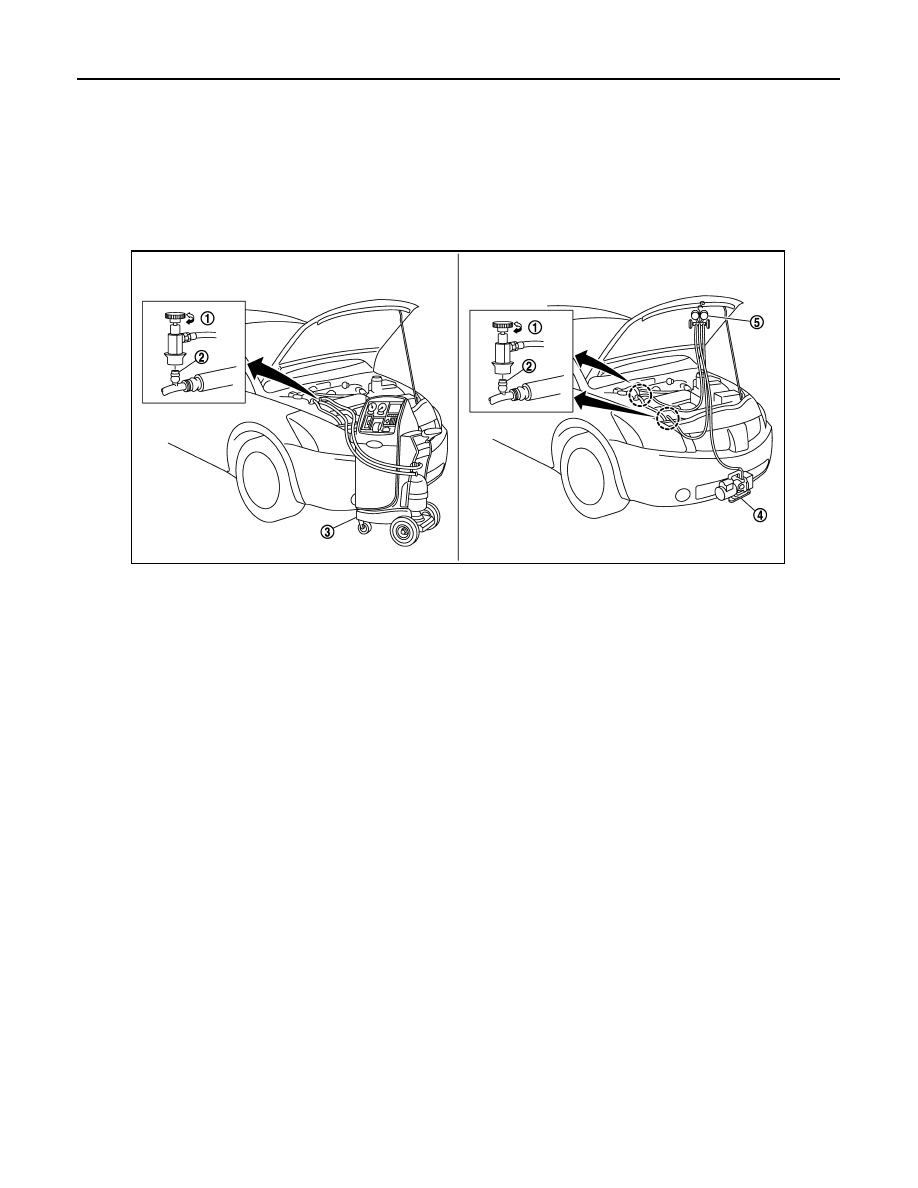Nissan Leaf. Manual - part 726

HA-26
< BASIC INSPECTION >
[WITH HEAT PUMP SYSTEM]
REFRIGERANT
REFRIGERANT
Description
INFOID:0000000010122103
CONNECTION OF SERVICE TOOLS AND EQUIPMENT
CAUTION:
To prevent fluorescent indicator from entering, prepare and use exclusive hose for EV (electric vehi-
cle) and HEV (hybrid vehicle) when connecting recovery/recycling/recharging equipment.
Check Refrigerant Leakage
INFOID:0000000010122104
DETECTING LEAKAGES WITH FLUORESCENT INDICATOR
CAUTION:
Do not use fluorescent indicators as these may reduce the insulation resistance.
CHECK REFRIGERANT LEAKAGE USING ELECTRICAL LEAK DETECTOR
CAUTION:
Be careful of the following items so that inaccurate checks or misidentifications are avoided.
• Do not allow refrigerant vapor, shop chemical vapors, cigarette smoke, or others around the vehicle.
• Always check refrigerant leakage in a low air flow environment so that refrigerant may not disperse
when leakage occurs.
1. Connect recovery/recycling/recharging equipment (for HFC-134a) or manifold gauge set to A/C service
valve.
2. Check that refrigerant gas pressure is 345 kPa (3.5 kg/cm
2
, 50 psi) or more when temperature is 16
°C
(61
°F) or more. When pressure is lower than the specified value, fully recover all refrigerant and then
charge with refrigerant from the service can to the specified level.
NOTE:
Leakages may not be detected if refrigerant gas pressure is 345 kPa (3.5 kg/cm
2
, 50 psi) less when tem-
perature is 16
°C (61°F) or less.
3. Clean area where refrigerant leakage check is performed, and check refrigerant leakage along all sur-
faces of pipe connections and A/C system components using electrical leak detector probe.
CAUTION:
• Even when a leakage point has been found, always continue and complete checking along all
pipe connections and A/C system components for additional leakage.
• When a leakage is detected, clean leakage area using compressed air and check again.
1.
Shut-off valve
2.
A/C service valve
3.
Recovery/recycling/recharging
equipment (for HFC-134a)
4.
Vacuum pump
5.
Manifold gauge set
JPIIA0127ZZ